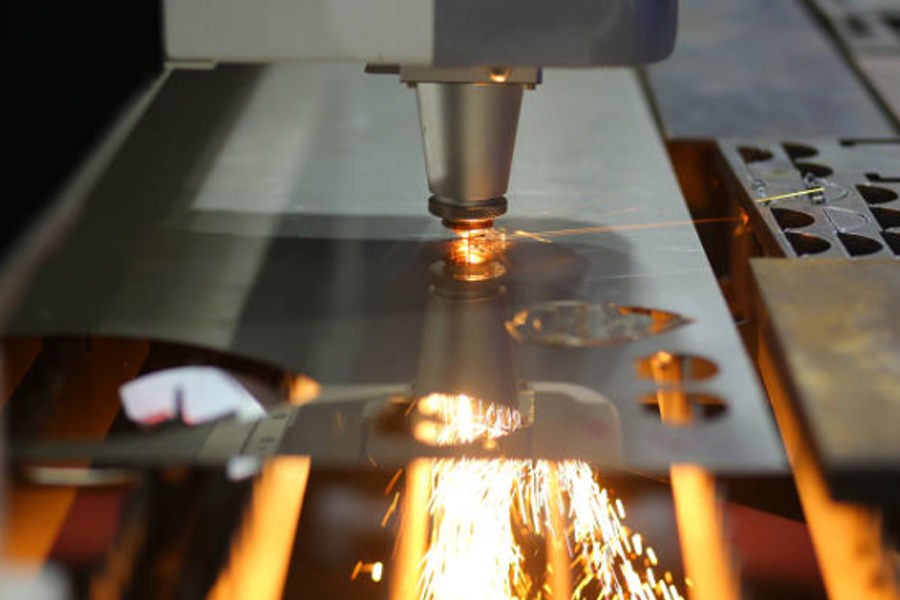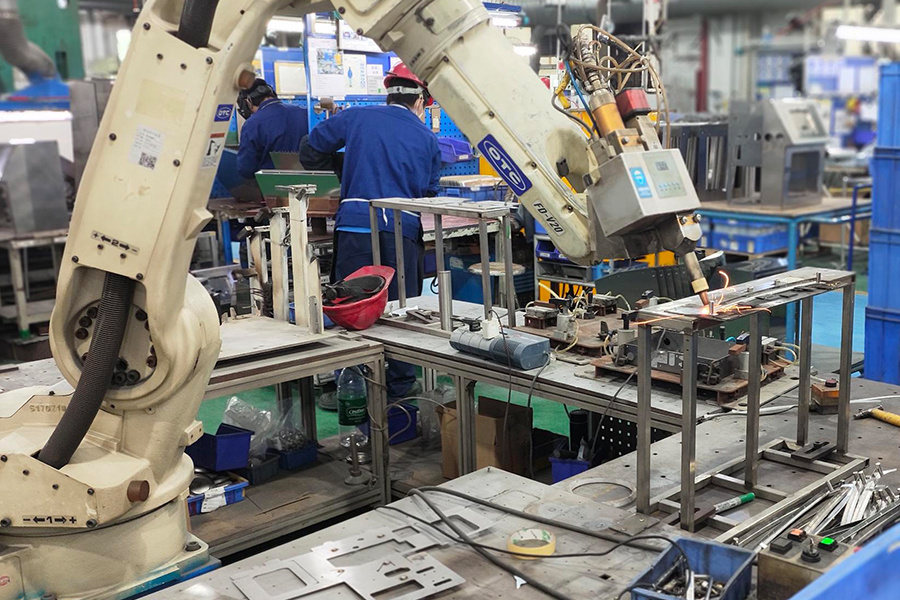Analysis of the core technology and multi-field application of sheet metal processing
Release time:
2025-05-12
Sheet metal processing is an important link between design concepts and finished products, with advantages such as high strength, ductility and conductivity. Its main application areas include mechanical equipment, electronics, automobiles, aircraft, etc., with a high degree of customization and freedom. Its main advantages are the ability to meet various production needs, including high-precision processing, flexible modification functions and high production efficiency.
Sheet metal processing serves as a vital link between design ideas and finished goods in the broad realm of contemporary production. It has a crucial place in several sectors due to its distinctive procedure and extensive use. In order to give you a thorough grasp of this important manufacturing process, we will next go over sheet metal processing in great detail, covering everything from its fundamental ideas to its main benefits, from application areas to development trends and typical issues.
The fundamental meaning and importance of sheet metal processing The process of transforming metal sheets into components or completed goods with a variety of forms and uses involves a number of techniques, including shearing, stamping, bending, welding, and more. With their high strength, ductility, and conductivity, these metal sheets—which typically comprise copper, aluminum, and steel plates—offer a wide range of materials for sheet metal processing.
In the industrial sector, sheet metal processing offers several important benefits. It is a crucial connection between product design and manufacturing, and from the standpoint of product realization, it may turn the designer's ideas and sketches into tangible components. Sheet metal components are used extensively in mechanical equipment, electronics, autos, aircraft, and other industries in industrial production. They provide strong support for the regular functioning of a variety of goods. Additionally, sheet metal production offers a great deal of customization and freedom. In order to satisfy a wide range of market demands, it may manufacture components with a variety of forms and specifications.

Sheet metal processing's primary benefit is its ability to satisfy a variety of production demands. 1. Processing with high accuracy to guarantee product quality High-precision component fabrication during sheet metal processing is ensured by sophisticated processing machinery and exact process control. For instance, the location and force of stamping may be precisely controlled by CNC stamping machines, resulting in very high dimensional and position precision for processed holes, grooves, and other features. High-precision sheet metal components may precisely match other parts and components to increase the product's overall performance stability and accuracy throughout assembly, guaranteeing its quality and dependability. 2. Adaptable modification features to meet individual requirements One of the main trends in the industrial sector as a result of the diversification of market demand is customized customisation, and sheet metal processing simply offers powerful customization options. By modifying the processing technique and molds, sheet metal processing may be accomplished, regardless of intricate geometric forms or unique functional needs. Through sheet metal processing, designers may create one-of-a-kind sheet metal structures that are tailored to the particular requirements of clients. Sheet metal processing is extensively employed in many different sectors to satisfy the individualized demands of distinct consumers because to its flexible modification capacity. 3. High production efficiency and lower manufacturing costs The automation of sheet metal processing machinery has increased along with science and technology's constant progress, and production efficiency has also greatly increased. For instance, processing times are significantly reduced by the speed and accuracy with which laser cutting equipment can cut a variety of metal sheets. Through sensible process design and production management, sheet metal processing may also accomplish batch production, increase resource usage and production efficiency, and lower the cost of producing individual items. Sheet metal processing has a distinct advantage in large-scale industrial production due to its high production efficiency.

Sheet metal processing is widely used and integrated into many different industries. 1. The production of mechanical equipment Sheet metal processing elements are a crucial component of the primary structure and essential portions of mechanical equipment manufacture. For instance, sheet metal processing is often used to make the machine tool's fuselage, bracket, protective cover, etc. These components not only have the strength and stiffness to support a range of stresses when the equipment is operating, but they also perform well in terms of heat dissipation and aesthetics. The intelligent and automated development of mechanical equipment is also strongly supported by the employment of sheet metal processing in automated production lines, industrial robots, and other equipment. 2. The sector of electronic goods High standards for component size, precision, and appearance are required for electronic goods, and sheet metal manufacturing can only satisfy these demands. Sheet metal components are often utilized to create shells, chassis, shielding coverings, and other components for electrical devices. For instance, sheet metal processing may be used to make a mobile phone's metal shell thin, attractive, and long-lasting. It can also serve as a kind of electromagnetic barrier. In order to guarantee the durability and dependability of electronic devices, sheet metal processing is also used extensively in the internal structural components of devices like computers, tablets, digital cameras, etc. 3. The automotive industry One of the key industries that uses sheet metal processing is the automobile manufacturing sector. Many sheet metal components make up the car's basic structure and covering components, including doors, hoods, trunk lids, and other components. To guarantee the car's safety and longevity, these sheet metal components must not only be strong and resistant to corrosion, but also have a lovely look and high aerodynamic efficiency. Additionally, sheet metal processing, which is essential to the production of vehicles, is used in the chassis and engine components.
Processing sheet metal is a crucial component of the industrial sector. In conclusion, sheet metal processing, a crucial component of contemporary manufacturing, offers many key benefits, including excellent accuracy, adaptable customisation, and productive output. It is extensively used in several sectors, including electronics, automotive, aerospace, and machinery & equipment. In order to fulfill the demands of the more diverse and upscale market, the sheet metal processing industry is evolving toward intelligent, green, environmentally friendly, high-precision, and high-complexity processing. To guarantee that they get high-quality sheet metal components, clients should thoroughly evaluate the strength, capabilities, and service level of the processing manufacturers when selecting sheet metal processing services. They should also make sure that their own wants and specifications are clear. It is recommended that practitioners in the sheet metal processing industry continue to monitor industry development trends, increase their investment in technology R&D and innovation, improve their own competitiveness, and contribute more to the growth of the manufacturing sector. To put it simply, sheet metal processing is essential to the industrial sector. It is not only a crucial component in the realization of products, but it also plays a significant role in encouraging the advancement and growth of the industrial sector. In my opinion, the sheet metal processing sector will open up more room for growth in the future and provide strong assistance for the development of other sectors.
Key Words






